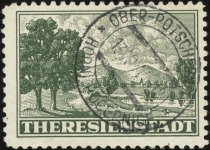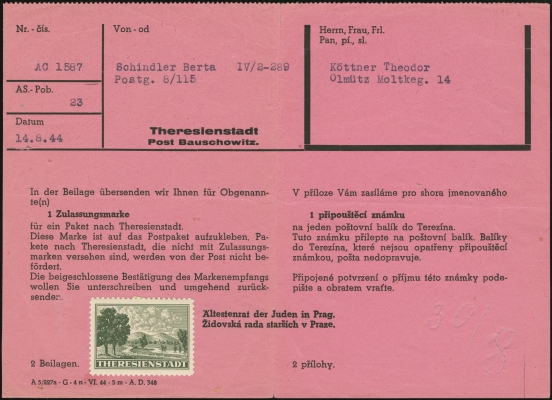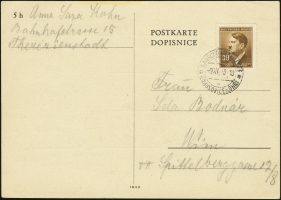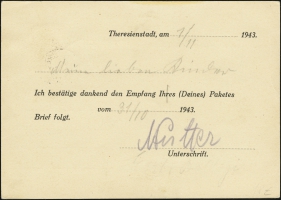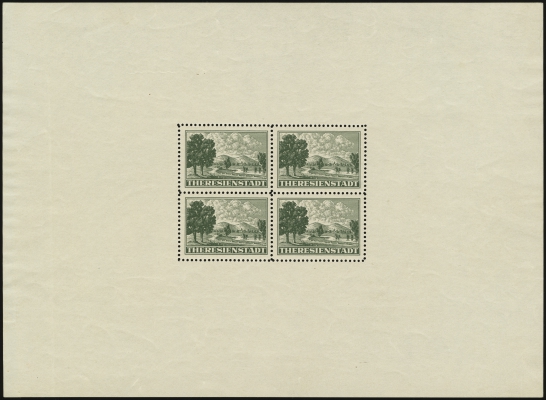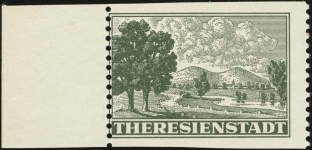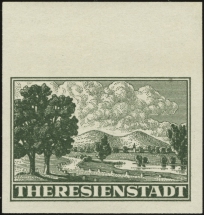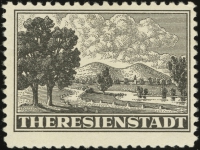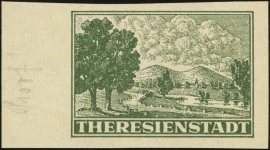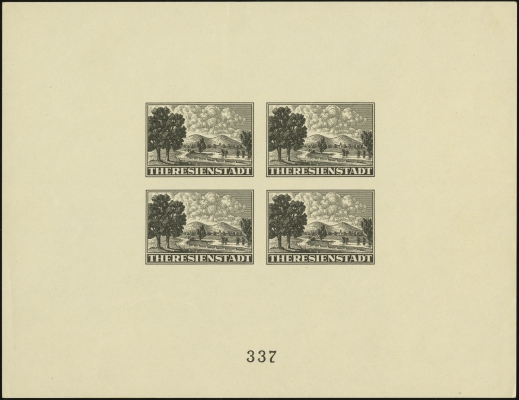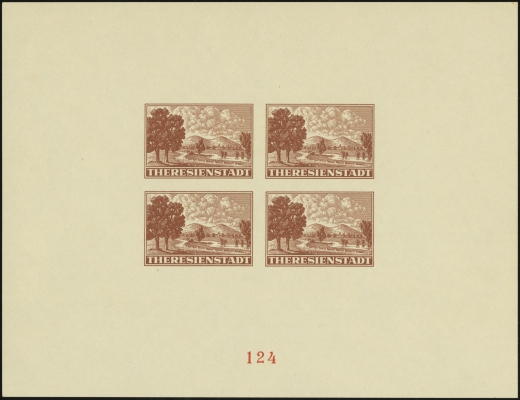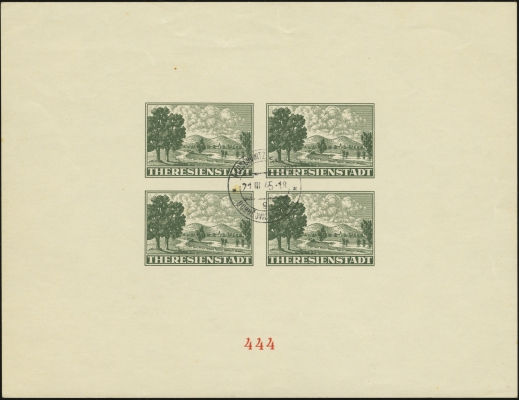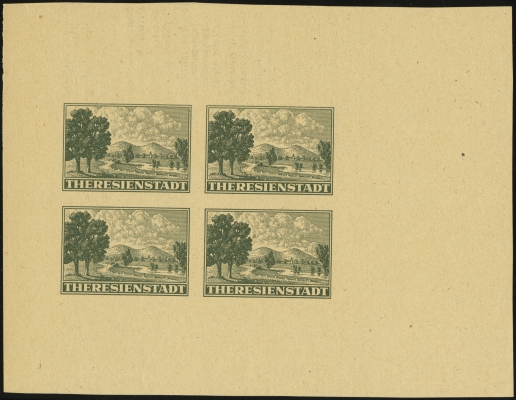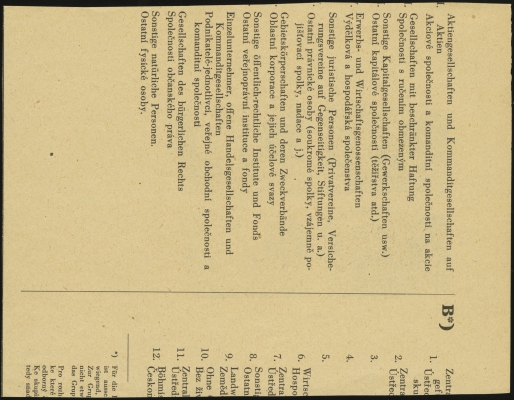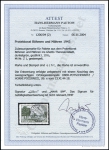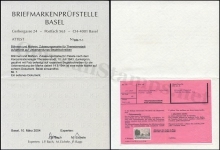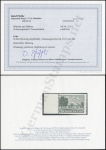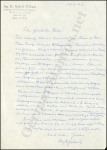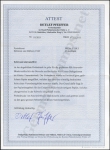Theresienstadt Parcel Admission Stamp
Upon receipt of the parcel, the inmate could send a per-printed card acknowledging receipt of the parcel.
The parcel admission stamps were initially printed in sheets of 25. After most of the stamps were printed, two blocks of four were removed from the printing plate. These blocks were subsequently used to print sheets consisting of a single block of 4.
Numerous perforation abnormalities and proofs can be found due to printing and perforating experiments that were conducted prior to the final printing process being determined. These including partial perforations and imperforate varieties which are believed to have been in remainder stock found at the close of WWII.
Proofs exist in black and green colors.
In mid-1942, the German authorities began transforming the Theresienstadt ghetto into a “show camp” in an effort to quell criticism within the international community. A massive beautification project was undertaken in preparation for a visit in June 1944 by delegates of the International Red Cross and representatives of the government of Denmark.
The delegates were given a guided tour in which they followed a red line on the ground and were not permitted to speak to most of the inhabitants. Upon the conclusion of the visit, the delegates published positive reports of the visit. The Germans were ecstatic, going so far as to produce a propaganda film about the visit.
As part of the propaganda effort, souvenir sheets of the Theresienstadt Parcel Admission Stamp were produced for distribution to IRC delegates on official visits. These sheets were found in remainder stocks post-war. They can be found in black, brown, and dark green, and were numbered sequentially.
Proofs of the Red Cross sheets also exist.
Theresienstadt Parcel Admission Stamp
Upon receipt of the parcel, the inmate could send a per-printed card acknowledging receipt of the parcel.
The parcel admission stamps were initially printed in sheets of 25. After most of the stamps were printed, two blocks of four were removed from the printing plate. These blocks were subsequently used to print sheets consisting of a single block of 4.
Numerous perforation abnormalities and proofs can be found due to printing and perforating experiments that were conducted prior to the final printing process being determined. These including partial perforations and imperforate varieties which are believed to have been in remainder stock found at the close of WWII.
Proofs exist in black and green colors.
In mid-1942, the German authorities began transforming the Theresienstadt ghetto into a “show camp” in an effort to quell criticism within the international community. A massive beautification project was undertaken in preparation for a visit in June 1944 by delegates of the International Red Cross and representatives of the government of Denmark.
The delegates were given a guided tour in which they followed a red line on the ground and were not permitted to speak to most of the inhabitants. Upon the conclusion of the visit, the delegates published positive reports of the visit. The Germans were ecstatic, going so far as to produce a propaganda film about the visit.
As part of the propaganda effort, souvenir sheets of the Theresienstadt Parcel Admission Stamp were produced for distribution to IRC delegates on official visits. These sheets were found in remainder stocks post-war. They can be found in black, brown, and dark green, and were numbered sequentially.
Proofs of the Red Cross sheets also exist.
